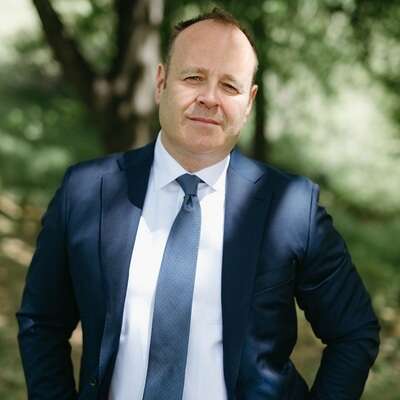Kevin Keegan, Partner, Boyden UK & Ireland, highlights the difficulty for leaders to reflect on their own sustainability and continuous improvement as they climb the corporate ladder.
As a leader, it is often difficult to reflect on the necessity of sustainability and continuous improvement in the context of your own leadership performance. The more senior you get, the greater a problem this becomes, evolving into a business and personal risk. With fewer colleagues in a position to question and challenge you, it is easier to rest on your laurels and neglect your potential for growth.
A coherent, well-executed leadership development plan (LDP) addresses this risk. An LDP is a leadership development framework that allows C-level leaders to sustain high performance, remain relevant in their field and stay connected to colleagues at all levels whilst remaining close to business operations.
The process of leadership development is one of personal development. The best plans provide leaders with a useful framework to set goals in their personal lives as well as their careers and enable a growth mindset which is key to career longevity.
As an executive, you want to reach the top of your game and stay there for as long as you can. Leading for longevity takes more than competence and commitment, however; you need a clear-minded, purposeful approach. To inspire your employees to give their best for you every day, over the course of years, you need to lead by example.
The Leadership Development Plan: a ‘Career Satnav’
A leadership development plan is a self-directed statement of where you’re going as a business leader and how you intend to get there. Like all good strategies, the plan takes stock of the present, which in turn informs the future.
The LDP has been described as a ‘roadmap’ for growth as a business leader. However, when coupled with Executive coaching the best LDPs bear more similarity to GPS navigation; tracking your progress and showing you how to correct your course if you stray from the best path. This ties in with the modern project management principle of agility. Your LDP should be a fluid, continually evolving document, rather than something you only look at once a year.

Most leadership development plans comprise the following stages:
- Initial Assessment: First, you will need to consider your areas of strength and weakness, potentially with input from others in your organisation. You may consider psychometric testing or competency frameworks to gain insights here. At this point, it’s also important to consider your own aspirations; what do you want to achieve during your leadership career?
- Development: Once you’ve assessed your performance and set your goals, it’s time to put your plan together. You may decide to include workshops, seminars, coaching, mentoring, on-the-job training and other learning opportunities.
- Action planning: You should develop a detailed action plan for achieving your development goals. This should include specific steps, timelines and metrics for measuring progress.
- Evaluation and accountability: Regularly scheduled evaluations ensure that you’re making the required progress and help to indicate whether any change of direction is necessary. As a C-suite leader this can be challenging – this can be addressed though an executive coach or mentor.
Psychometric testing and competency models, such as PROPHET, Lominger, and the decision-making analytical tool the Boyden Leadership Framework can be pivotal in deciding where to place the focus of your LDP and the assessment of your progress.
It’s not necessary for your LDP to be a formal course, as long as you have a clear strategy in place and are committed to revisiting it on a regular basis. You can tailor your plan to cover the growth opportunities that most appeal but also those that will underpin future success; that might mean consuming literature in a certain area, working outside your company or your role for a time, or engaging in coaching or mentorship. Opportunities for leadership development exist along a continuum, from growing your knowledge to refining your practical capabilities. It’s up to you to decide which specific opportunities will offer you the greatest benefit.

Tools to Execute the Plan
To make the most of your LDP, it can be useful to employ a strategic planning tool, such as PESTLE. PESTLE is an acronym that stands for Political, Economic, Sociocultural, Technological, Legal and Environmental, referring to the external factors that should have a bearing on business strategies. Using these categories can help you identify the most important areas of potential growth for the years ahead.
If we start with Technology, the recent explosion in the popularity of generative artificial intelligence (AI) provides a useful hypothetical case study. How could you use a program like ChatGPT to streamline your team’s or your company’s operations? Might AI be helpful in the development of workflows or instructional material for those on your team? Could you use it to become more efficient in the publication of marketing content? How might you prepare for more powerful AI capabilities that will undoubtedly be available five or 10 years from now? How will you need to lead in that future environment and how do you prepare for it?
With technology getting exponentially more powerful, these are no longer optional considerations for executives. If you can’t plan how you’re going to use what’s out there, your competitors will leave you behind as an analogue leader in a digital world.
COVID-19 provided us with a clear example of this; overnight, the pandemic created a seismic sociocultural shift in how we work; yet many leaders are still coming to terms with remote and hybrid working and the challenges of managing and engaging teams with less office time. Ironically, employees worldwide are looking for more engagement, while traditional leadership approaches are falling short.
These considerations are specific to your industry, your company and your role. Regardless of your situation, though, they will always provide some much-needed clarity about what you need to address in your LDP.

Context & Focus
A McKinsey report on ‘Why leadership development programs fail’ focuses on the danger of overlooking the broader context of an LDP. It notes that the best plans focus on a limited number of areas that will make “a significant difference to performance,” rather than taking a broad approach that focuses on every single leadership capability.
Using this wisdom in concert with a tool like PESTLE will help you to refine your development plan. What are the core competencies of your role, and how can you improve on them in the context of today’s most relevant external factors in the economy?
Learning from Decathletes & Disc Jockeys
The decathlon is a combined Olympic event consisting of 10 individual events; these range from the 100-metre sprint, to the shot put, to the long jump.
So, decathletes cannot train like contestants in other, more specialized sporting events. Instead, they need to plan their efforts strategically, squeezing competitive advantage out of their strongest events while ensuring their areas of weakness don’t ruin their overall performance. In many ways this is an apt metaphor for Leadership.
As a leader, you’re never going to be at the peak of every competency, but you don’t need to be in order to succeed. What you do need is an understanding of your areas of strength and weakness, and how to capitalize on the former while addressing the latter. The key to sustaining high performance is planning, review, coaching and accountability.
Another metaphor that relates to executive development planning is that of the DJ. DJs are typically passionate music fans; the depth of their understanding of tracks, genres, styles, and mixing techniques far surpasses that of their audience. However, this knowledge alone isn’t what makes a DJ a good performer. Instead, it’s their ability to relate to listeners through mixes, to consider and respond to what their audience wants in the moment, that sets them apart.
As an executive, you must learn how to refine and apply your own competencies in the same way. Your knowledge, experience, and qualifications aren’t going to inspire your employees. Your ability to use these factors to overcome obstacles and adopt the most appropriate leadership approach in a generational and organisational context, will.

Why Should Anyone Be Led By You?
In 2000, the Harvard Business Review published a paper entitled “Why Should Anyone Be Led by You?” a seminal work looking at the essential qualities required from good business leaders. Over two decades later, Robert Goffee and Gareth Jones’ study remains a vital resource in the field of executive development.
The pair noted that literature on executive performance saturated the market, yet there was still nothing that told “the whole truth about leadership”. They stressed their belief, however, that alongside “vision, energy, authority, and strategic direction,” the best leaders exhibited an ability to show vulnerability, be compassionate and capitalize on their own uniqueness.
This allows for a personal connection with subordinates that sets highly effective leaders apart. In one section, the authors discuss the quality of being a “sensor,” of being able, as a leader, to pick up on subtle, nonverbal clues from your followers. These clues are missed by executives who cannot connect personally with their colleagues and teams.
The key, Goffee and Jones noted, is that things like technical precision or strategic genius will only get you so far. For you to be a good leader, people must want to follow you. In order for people to want to follow you, you need to be authentic. As business leaders there is often a direct parallel between helping others grow and the growth of the enterprise. We need our people to learn, adapt and grow; having a plan for our own growth and the vulnerability to be able to be share this with others is true authentic leadership and therefore inspirational.
Unlocking the Best Version of Yourself
There is often an incorrect idea of leadership development as an attempt to address shortcomings, which is unhelpful; few people want to spend time focusing on their faults, and there’s a more productive way to frame it.
The most effective leadership development strategy, while being cognizant of foibles and ensuring these don’t derail or detract, focuses heavily on magnifying the benefits of your strengths and individuality and making you a more authentic leader. This, in turn, will encourage those around you to see their own leadership qualities and capitalise on them, for the benefit of both them and the organisation.
The best leaders are effective because they leverage their authenticity to benefit their organisations, not because they have no areas of weakness.
Leadership in the Era of Remote Work
The world of business has undergone rapid and substantial change since the onset of the COVID-19 pandemic. While more traditional arrangements have gradually returned in some areas, hybrid and remote work have remained a fixture, and there is evidence to suggest they are becoming more common1. This has effected a radical shift in the requirements executives face, and the skills they need to develop.
A 2021 article from Forbes Business Development Council, ‘A year of Remote Work,’ detailed lessons for leaders from the pandemic. The article points out that trust in employees is a much greater priority in a remote work setting, but equally many types of workers can be more productive when working from home, spending less time on meetings and client engagements in which they’re not making a major contribution.
If a large part of your time as a leader will be remote, you need to structure your LDP to take such considerations into account.

Using Your Internal Context in Your Executive Development Plan
360-degree feedback is not a new concept and yet it is often underutilised in leadership development planning. Similar to market research, it provides invaluable data to help us understand how we show up to different stakeholders. It is particularly powerful when based on a relevant competency model used in conjunction with psychometrics such as the Hogan Personality Inventory. In these circumstances the Leader is helped to decipher and address feedback with a skilled executive coach. The rigour of a competency model, the breadth and depth of data interpreted by a skilled facilitator, can help an executive to gain insights and unlock areas of leadership performance that can be career-changing.
Executive development plans can also be a lot lighter in tone, and solutions can serve multiple purposes. For example, to address knowledge of a new technology or process you could consider reverse mentoring with a junior employee in your company. This system sees a typically younger subordinate instruct you on some aspect of your work; it has become particularly useful in the context of rapid technological advancements in recent years. This also ties into the idea of authentic leadership; what better way is there to make junior employees feel valued than to take instruction from them? It has the added benefit of helping senior executives connect to, and see, their organisation in a very different way.
In a 2022 interview with McKinsey, ‘Don’t let fear stop you from forging ahead,’ Erika James, Dean of Wharton2 touts the advantages of reverse mentoring. James notes that executives, as they become more senior, can be prone to losing touch with the day-to-day processes that keep organisations running. She says reverse mentoring is a means of staying connected with the “people who are working most immediately with your customers or clients”.
LDPs for New vs. Existing Executives
Leadership development for newly-minted executives usually looks a lot different than for a leader with years of experience. Less experienced executives tend to undergo close mentoring, and this tapers off as they become more advanced.
So, self-direction in executive development planning becomes more important the longer you’ve been in senior management. Once you reach a stage at which mentorship is no longer a constant in your working life, the onus falls on you to decide how you want to grow, and how you’re going to make that happen.

Avoiding Attitudinal Sclerosis
It may be tempting to regard your executive development plan as a box-ticking exercise; something that must be done to keep your HR department happy. This attitude ignores the reality that without focused, deliberate professional development, you may never reach your leadership potential.
As your executive career develops and you become older, you will naturally be more comfortable in certain aspects of your role. Also, as noted above, your increasing seniority will rob you of more opportunities to receive constructive criticism. It can be tempting to settle into ‘tried and tested’ approaches as the years pass, ignoring opportunities for positive growth when there’s no immediate need for them. However, at a time when the world of work is changing more rapidly than ever before, this is a recipe for disaster. After poor results and behavioural issues, the main reasons executive are replaced is that they are seen as lacking relevance, out of touch with emerging trends or their paradigm for leadership is dated.
If you’re a leader aspiring to longevity in today’s business world, you need to inspire people to follow you through periods of immense change. Many workers fear developments like, say, AI; they see their current skills becoming obsolete, rather than technology opening new doors for them. As an effective leader, you need to encourage your followers to find a way to grow through these transitions. If your organisation is not open to progress, it will fail to keep up with other industry players.
Executive Development in a Rapidly Changing World
Leadership development planning is, as much as anything else, an opportunity to reflect on your own performance. Self-direction is increasingly vital for continuous improvement as you rise through the ranks of leadership, and the list of people who can offer you effective guidance becomes smaller and smaller.
Effective leadership is very different now than it was 30 years ago, and we can only assume similarly drastic change will come over the next 30 years. So, you need to have an effective leadership development plan in place if you want to keep delivering for your business, and developing as a leader and as a person.
As George Bernard Shaw said: “Life isn’t about finding yourself. Life is about creating yourself.”
Contact Kevin Keegan, a former Organisational Psychologist and Chief People Officer, now Partner at Boyden UK & Ireland, for more information.
1 Reported in Business Wire, 9th February 2023: Remote and hybrid work up to 84% in 2023, a 30% increase on 2022, from a survey by Akumina, a leader in Digital Workplace.
2 Erika James is the first person of colour to serve as Dean of the Wharton School since its establishment.




